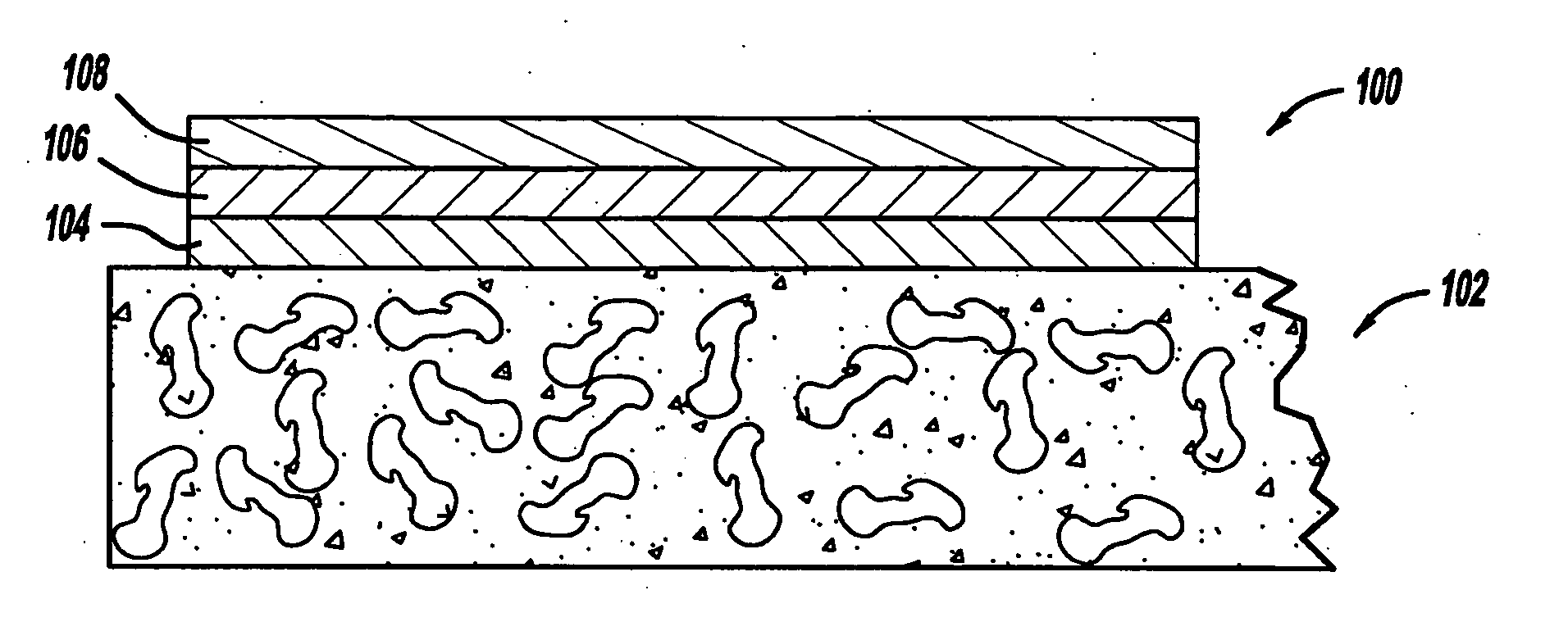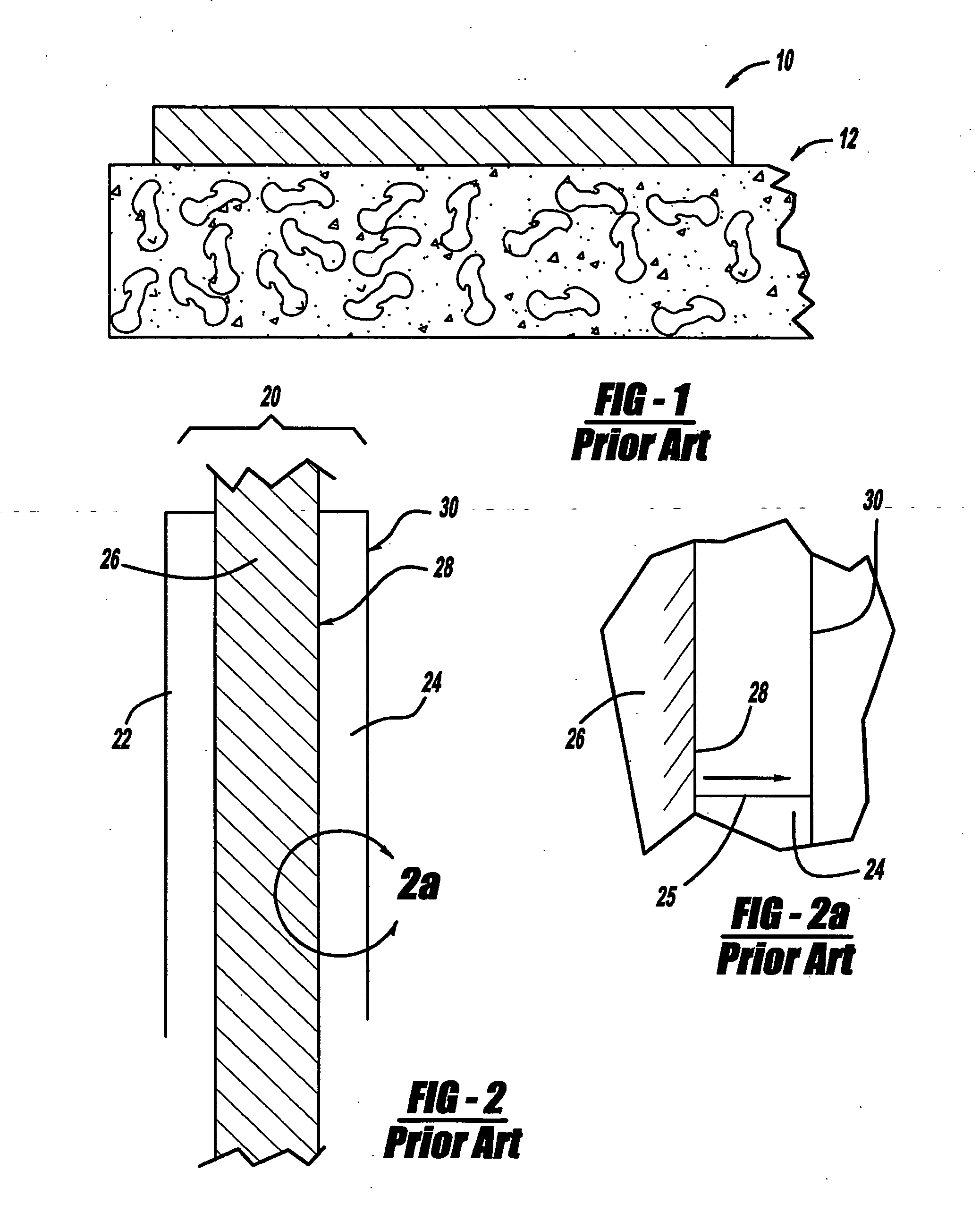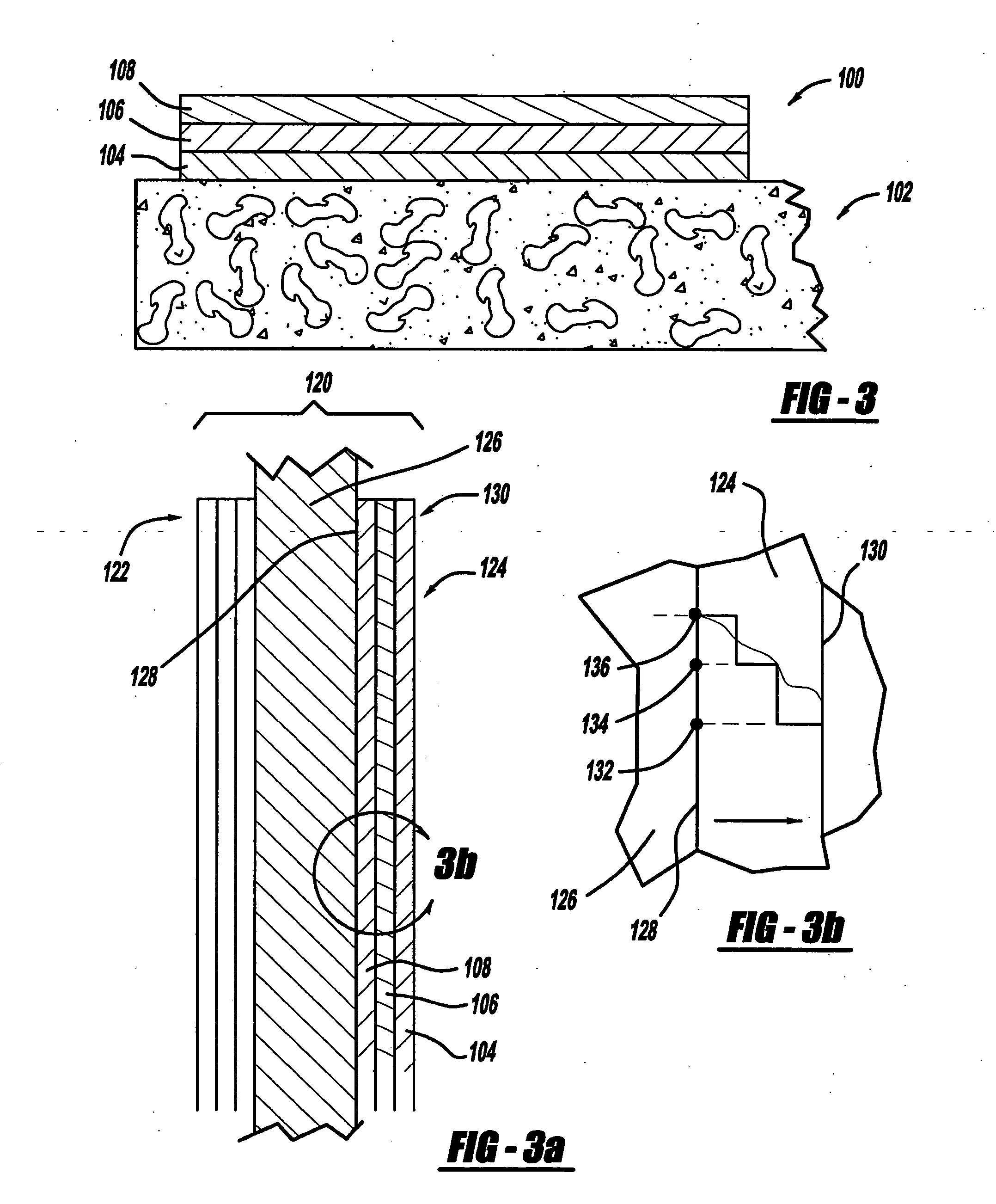Control parameters for optimizing MEA performance
a technology of mea and control parameters, which is applied in the manufacturing process of electrodes, cell components, electrochemical generators, etc., can solve the problems of high manufacturing cost of mea, difficult cleaning step, and high cost of eptfe substrates
- Summary
- Abstract
- Description
- Claims
- Application Information
AI Technical Summary
Benefits of technology
Problems solved by technology
Method used
Image
Examples
Embodiment Construction
[0053] The following description of the preferred embodiment(s) is merely exemplary in nature and is in no way intended to limit the invention, its application, or uses.
[0054] In accordance with the general teachings of the present invention, a gradient of ionomeric material is generated, disposed, or otherwise provided in the electrode, e.g., when bonded to the membrane. That is, a gradient exists with respect to the ionomeric material vis-à-vis the membrane. By way of a non-limiting example, the ionomer concentration, e.g., with respect to the carbon content of the catalyst layer (e.g., expressed as a ratio), is greatest in the area closest to the membrane (e.g., the membrane side) and is decreased in the area furthest from the membrane (e.g., the gas side). By way of another non-limiting example, the ionomer gradient can be formed such that the concentration (or the ratio if expressed in relation to the carbon content of the catalyst layer) can gradually, as opposed to rapidly, ...
PUM
 Login to View More
Login to View More Abstract
Description
Claims
Application Information
 Login to View More
Login to View More - R&D
- Intellectual Property
- Life Sciences
- Materials
- Tech Scout
- Unparalleled Data Quality
- Higher Quality Content
- 60% Fewer Hallucinations
Browse by: Latest US Patents, China's latest patents, Technical Efficacy Thesaurus, Application Domain, Technology Topic, Popular Technical Reports.
© 2025 PatSnap. All rights reserved.Legal|Privacy policy|Modern Slavery Act Transparency Statement|Sitemap|About US| Contact US: help@patsnap.com



